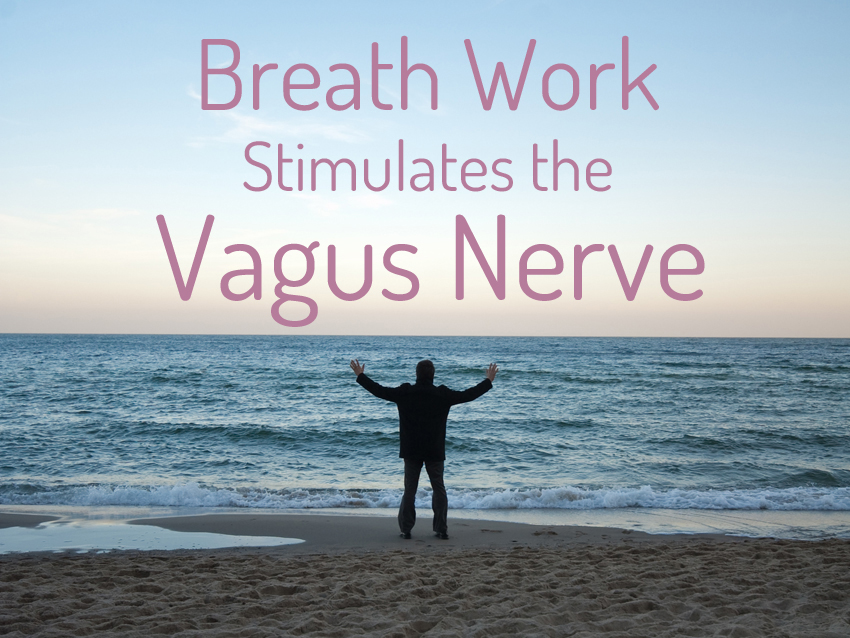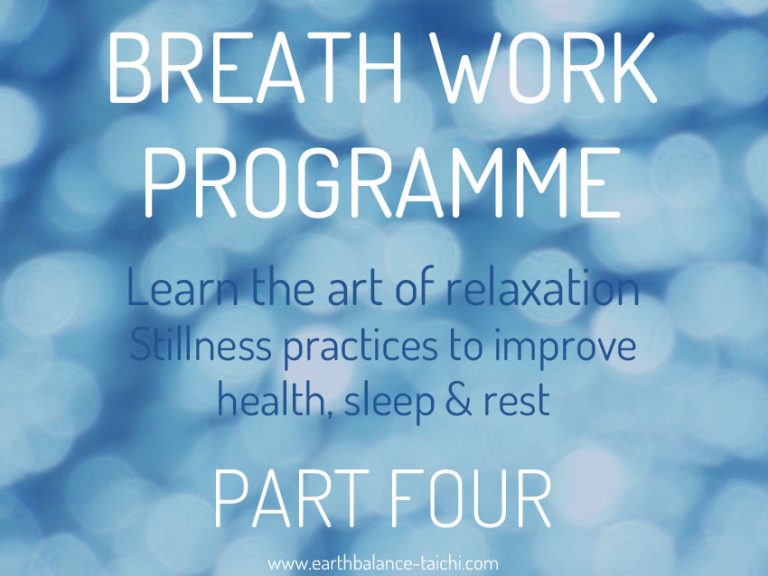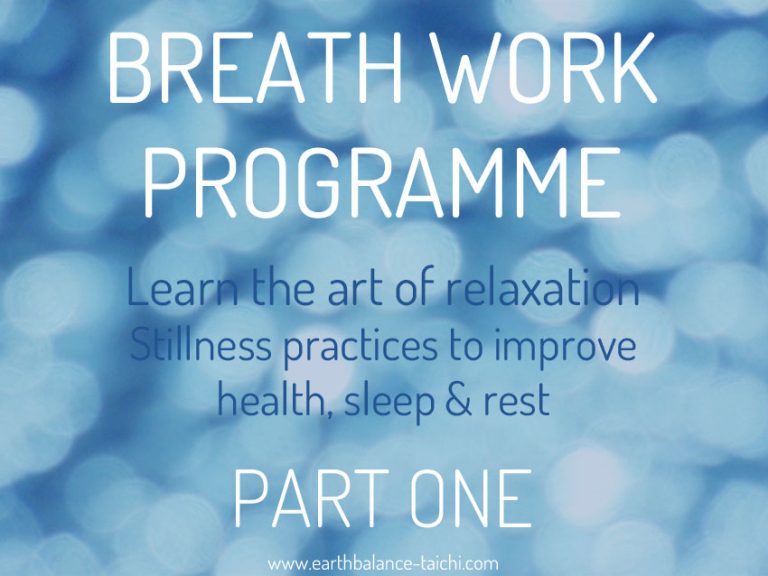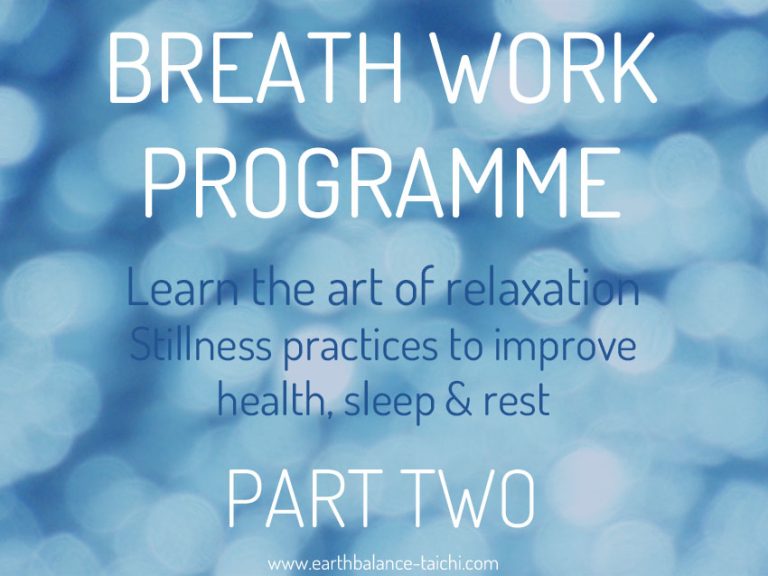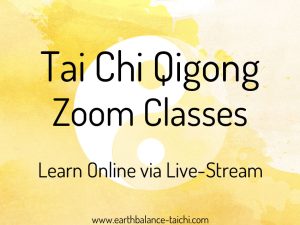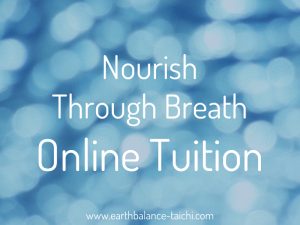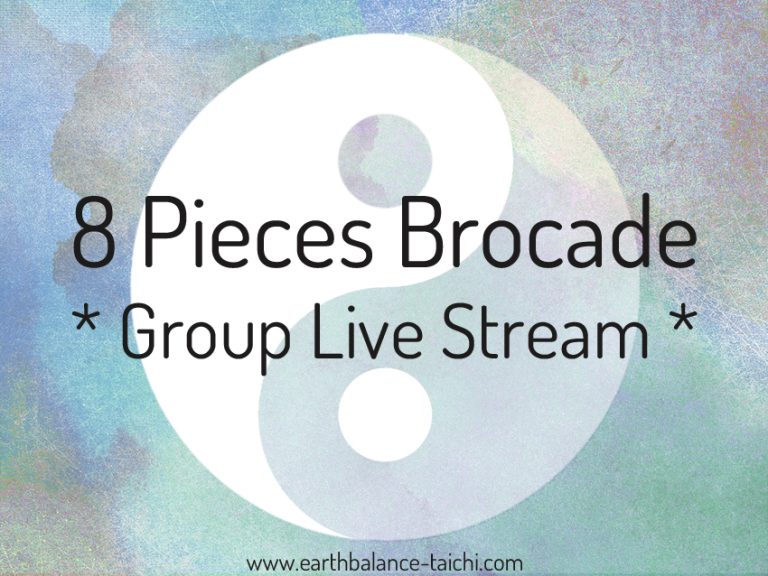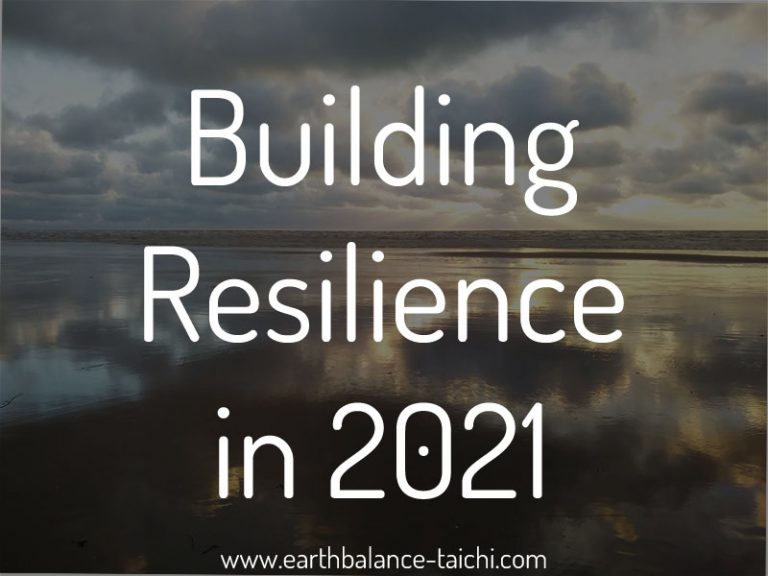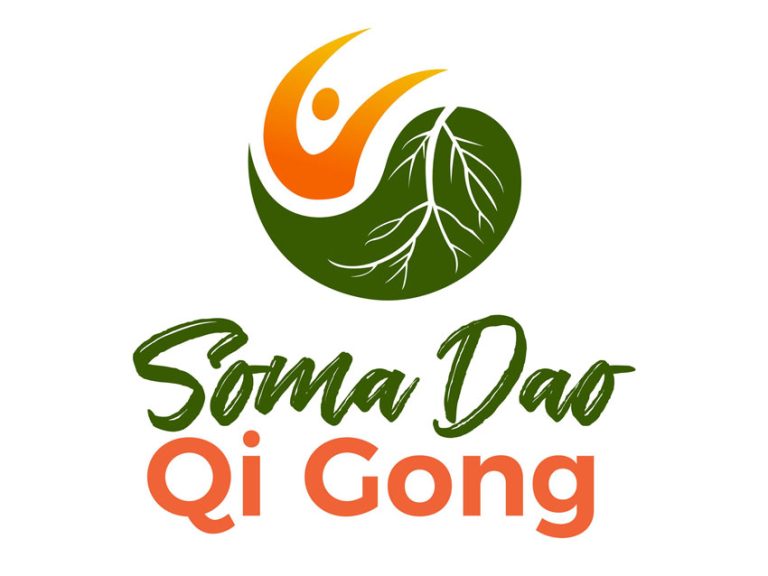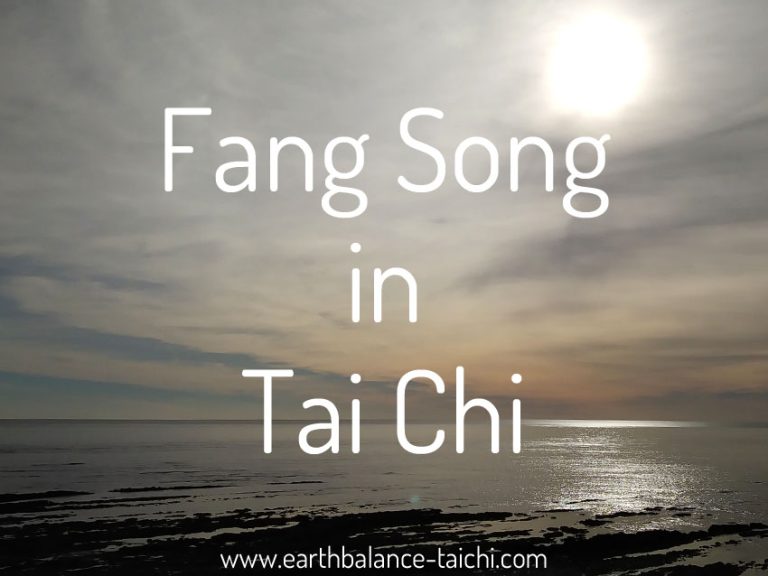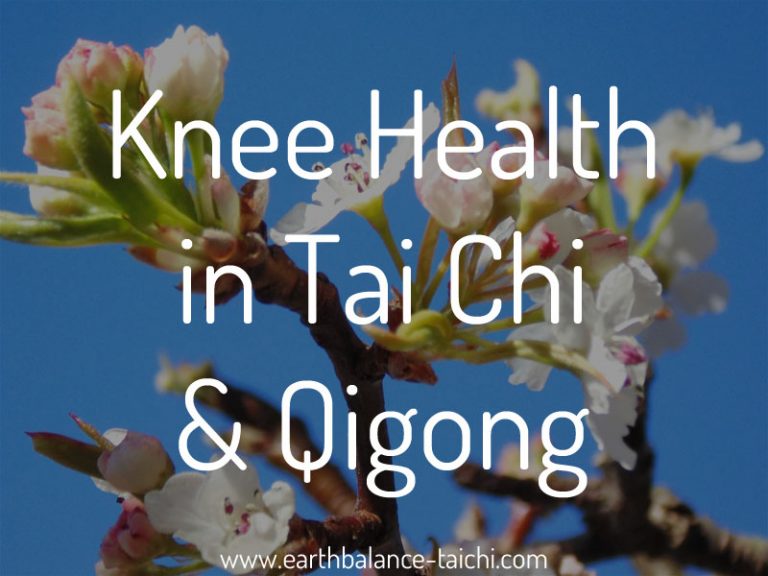Nourish Through Breath Part 3

Nourish Through Breath Part 3
Buddhist vs Taoist Breath Work
Welcome to my breath work course. This part of the programme looks at the two main breathing techniques, known as the relaxation breath and the energetic breath. Discover the role of the diaphragm in each of these methods and practice breathing a full breath.
Part Three Contents
16. The Vagus Nerve
17. Buddhist Breathing
18. Taoist Breathing
Vagus Nerve
Your internal guardian. The vagus nerve is the longest cranial nerve in the body that links the organs to the brain. It is both a sensory and a motor function nerve that is responsible for 75% of the autonomic relaxation response. This means the vagus nerve controls your stress. It monitors your internal organs and sends information to and from the brain. You can stimulate your vagus nerve and the relaxation response with slow, deep and full breathing. The key is the exhale, as this is the relaxing and releasing part of the breath. Take time to notice the exhale and discover how the body moves into rest and silence on the yin part of the breath.
In Taoist breath work, traditionally the tongue is placed on the roof of the palate, either with the tip of the tongue touching the back of the top teeth, or touching a location on the palate. This is called the magpie bridge or bridge over the heavenly pool and the tongue position links the Ren and Du Mai meridian vessels. New studies suggest that this engagement of the tongue muscles deep at the back of the throat whilst diaphragmatic breathing is also a way to stimulate the vagus nerve.
By controlling your breath work, lengthening the exhale and learning better breathing habits across your daily life, this can help keep a healthy vagus nerve function, which in turn fosters a neutral state in the mind and body. Read more about the vagus nerve here relating to the autonomic nervous system, your stress levels and Tai Chi.

Buddhist Breathing
Also called a full, abdominal, belly, baby or diaphragmatic breath, Buddhist breathing is both cleansing and relaxing. It is the relaxation breath, the autonomous breath when we are asleep and how we breathe as babies and children. After just one minute there is more oxygen in the blood and less carbon dioxide. This is the next step to training, controlling and co-ordinating your breathing. Here are instructions on how to do basic abdominal/diaphragm breathing for relaxation:
- Inhale abdomen expands
- Exhale abdomen relaxes
Natural movement, smooth and relaxing process. A sleep inducing breath. There must be side rib and spine involvement when breathing, as the diaphragm is a circular muscle. Abdominal breathing does not mean pushing the abdomen in and out. The breath must activate the whole diaphragm muscle to expand and compress around the whole torso. Can be used for stillness meditation practices, yoga, Qigong and Tai Chi. In Traditional Chinese Medicine this method helps build Qi in the lower Dantian, called lower Dantian breathing.
Practice deep abdominal breathing for 10-20 minutes.
Breathing Diagnostic
As with the natural breath, it helps to feel what is happening when breathing. You can gain tactile feedback from the parts of the torso that are moving. To test the side ribs and waist area, hold one hand on the side and one on the lower abdomen. Take a full diaphragmatic breath and notice the movement of the hands. You should feel the ribs expanding outwards with the same motion and pressure as the lower abdomen. To test the lower back area, hold one hand on the lower back and one on the lower abdomen. Take a full diaphragmatic breath and notice the movement of the hands. The spine movement will be much more subtle. This is a diagnostic that you can use anytime. Over time as you develop body awareness and sensitivity, you will be able to feel the diaphragm contract and relax.
Try out the techniques to see which parts of the torso move during the Buddhist breath.
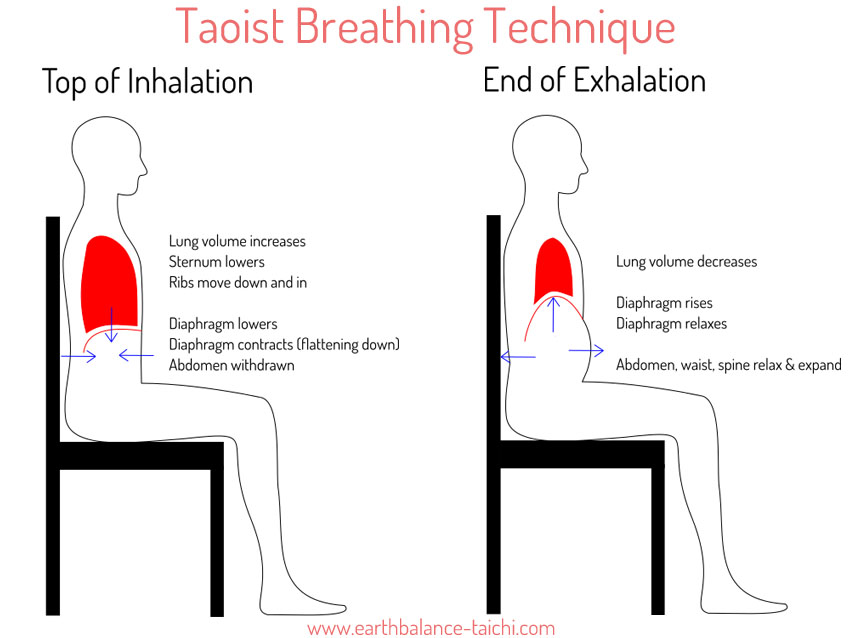
Taoist Breathing
Also called a reverse abdominal breath, Taoist breathing is both cleansing and energizing. It is the activating breath. The movement of the abdomen is reversed. The process is the same as with a full breath, except in reverse, where the inhale condenses in the abdomen creating slight pressure on the circulatory system and a squeezing and compressing motion in the organs. This method gets the blood pumping and is believed to bring more oxygen into the blood. It is also seen as a natural way for the body to cope with strong emotions e.g. feeling excited or being scared. Here are instructions on how to do basic reverse abdominal breathing:
- Inhale withdraw the abdomen
- Exhale expand the abdomen
Stay relaxed, do not tense muscles. A natural way the body breaths to get power out. Can be used for active meditation practice, yoga, Tai Chi and martial arts. In Traditional Chinese Medicine this method aids the expanding and withdrawing of Qi. Exhalation Qi expands to skin, limbs, and on the inhalation Qi draws into marrow. If pressure builds up in solar plexus, take time out to relax and Buddhist breath before trying again.
Practice Taoist breathing for 2- 5 minutes.
Copyright Notice
© 2021 www.earthbalance-taichi.com All Rights Reserved. As the author and designer of this tutorial, I am granting you permission to use these resources for your own personal use only. Reproduction of any kind without prior written permission is strictly prohibited - this includes but is not limited to making copies, distributing, teaching, selling or publishing online or offline whether for personal, educational or commercial use. Privacy policy www.earthbalance-taichi.com/disclaimer/
Terms of Use
The information contained on this webpage is for entertainment purposes only. The information provided is not advice, and should not be treated as such. The information is provided by “earthbalance-taichi.com and Earth Balance Tai Chi” and whilst we endeavour to keep the information up-to-date and correct, we make no representations or warranties of any kind, express or implied, about the completeness, accuracy, reliability, suitability or availability with respect to the Ebook or the information, products, services, or related graphics for any purpose. Any reliance you place on such information is therefore strictly at your own risk. In no event will we be liable for any loss or damage including without limitation, indirect or consequential loss or damage, or any loss or damage whatsoever.
Medical Advisory
Before starting this programme please consult with your doctor. Earth Balance Tai Chi cannot be held responsible for any injury, harm or damage caused directly or indirectly by relying on the information on this webpage.
